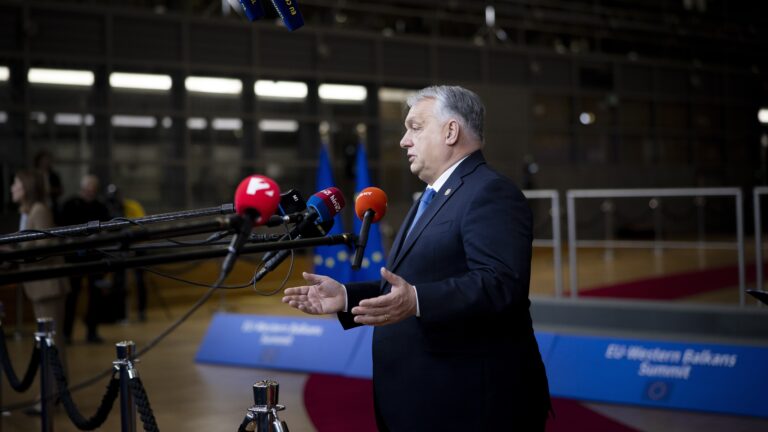This article examines the history of US attitudes to and presence on Greenland, and illustrates how smaller countries can leverage their bargaining power when negotiating with an American administration focused on global geopolitical competition. By detailing the treaties signed between the US and Denmark, it highlights how Cold War negotiations reflected power dynamics, and the strategies Denmark employed to safeguard its territorial sovereignty while accommodating US strategic priorities.
Acquiring the island is not a new idea in American politics. The possibility of purchasing the island was first raised in the 1860s but did not become a central focus of US strategic thinking until the quick success of the Blitzkrieg in 1940. After the occupation of Copenhagen by the Wehrmacht, the Danish Ambassador to Washington, Henrik Kaufmann feared that essential supplies to the island would be cut off, thus putting in danger the local population. On 9 April 1941 he signed the Greenland Treaty with Secretary of State Cordell Hull, but the Danish government at that time called this high treason. The document while recognized Danish sovereignty over Greenland, gave US the right establishes and operate defence areas or military bases on the isle. At that time, few aircraft could fly directly from Newfoundland to Ireland, and the German Navy made efforts to control the island’s coastline. Giving the urgency of the situation, the US government dispatched a naval convoy to Greenland and established a military base there and Greenland became a strategic choke point in transporting materiel to the British Isles during the war. Interestingly, meteorological stations on the island helped determine the optimal timing for the D-Day landings.
After 1945, Greenland remained vital to the Americans due to its equidistant location between Moscow and Washington, making it a more strategically significant asset than many European allies. In 1946 the United States even sought to purchase the island once again. After the Danes resisted, defence planning within NATO was undertaken by Denmark and the United States, with contributions from Belgium, the Netherlands, France, Iceland, Norway, Portugal, and Great Britain. Being an integral part of the small kingdom, Greenland’s use for military purposes is still regarded as one of Denmark’s contributions to the alliance.
In 1951 in Copenhagen a new Defence Treaty was signed between the two states, which also terminated the treaty signed in 1941. This agreement between the United States and Denmark should be understood in the context of global affairs during the early Cold War when the US grand strategy had envisaged retaliatory nuclear strikes on the Soviet Union from North Africa and Great Britain; however, after the Korea, doubts arose about whether these forward bases would be tenable in case of a war.
The negotiations took place in a cooperative spirit and were based on the 1941 treaty. The new treaty marked the beginning of the mutual dependence of these two countries, while the creation of NATO, of which Denmark became a member in 1949, provided a new framework for resolving the Greenland question. Consequently, the issue was formally tied to the regional planning process within NATO: in January 1951 the secretaries of the Atlantic Planning Group requested that Denmark and the United States initiate discussions to fulfil the military requirements of the adopted NATO Medium Term Plan. These requirements were vaguely defined, and the alliance provided no guidance on conducting the negotiations, leaving it to the two countries to define the agenda during the talks.
Denmark, as the weaker partner, had more modest objectives. First, they sought to ensure the sovereignty of Danish territories and the protection of the indigenous population. Secondly, since the 1941 agreement was unpopular in Denmark, the government aimed to demonstrate to the public and the parliament that Greenland had not become an American colony.
The United States had strategic interests in the region, making their motivations stronger and granting them greater bargaining power. The United States had decisively influenced NATO regional planning groups’ recommendations concerning Greenland and could argue that the agreement served a dual interest: deterring the USSR and ensuring Greenland’s full protection. The US also had the resources to meet expectations and could rightly claim that Denmark could not defend its territory within the sphere of influence of a superpower with nuclear weapons.

Ultimately, the Agreement granted extensive rights to the US, however, it soon became clear that its operations relied on Danish goodwill. The two countries’ objectives were reflected in their initial drafts: the Danish delegation referred to it as ‘the defence of Greenland,’ while the Americans described it as ‘the defence of Greenland and the North Atlantic area’. Disagreements about the defence agreement’s nature stemmed from differing understandings of its purpose.
Concerned that the agreement might be viewed as the island being sold to the Americans, Denmark insisted on Greenland being under a Danish commander-in-chief. They argued that defence should be a joint effort and claiming that this is a ‘matter of national pride’ to them. They also sought to define defence tasks in Greenland that were specifically Danish. The Americans objected, contending that the treaty was not about command relations but was ‘only intended to give us certain rights’.
The US’s primary goal was to establish new bases on the island, with their initial draft identifying six geographical locations for this purpose: Narsarsuaq, Sondrestrom, Thule, Maraq, Ikateq, and Grønnedal. The US sought extensive military rights within these defence areas, including complete freedom to adapt them for military use, construct and operate facilities, store supplies, station personnel, and maintain exclusive jurisdiction. The US also requested considerable rights outside the bases, such as conducting topographic, hydrographic, and geodetic surveys across Greenland and taking aerial photographs anywhere, along with access to Danish weather and communication stations. Another requirement was unrestricted military movement by land, water, and air to and between the defence areas.
In contrast, Denmark emphasized joint responsibility for Greenland’s defence. They proposed that designated stations formally be ‘combined Danish–American defence establishments’. Additionally, they sought to carve out specific defence tasks for Denmark to prevent the impression that Greenland had been handed over to the Americans. They also wanted strict limitations on American activities outside the defence areas. Initially, Denmark excluded the possibility of US surveys on the island.
The American negotiators accepted the inclusion of Danish liaison officers at each US-operated area. To accommodate Danish concerns, the US proposed that Denmark should provide the United States with the required data and aerial photographs, but if Denmark could not do so, the United States would be permitted to conduct its own surveys.
The United States adopted a strategy of authority in negotiations. However, they refrained from employing ‘take-it-or-leave-it’ strategies. Domestically and in front of the American delegation, the Danish government employed a ‘tied hand’ strategy, emphasizing to both their public and the Americans that negotiators’ that their options were limited and there was only so far they could be pushed. Simultaneously, they sought to reassure the Americans that their objectives would be met if special Danish interests were taken into account, which would help the government manage potential parliamentary criticism. It is important to note that American soldiers were already stationed on the island during negotiations. The Danes also tried to use moral arguments, suggesting that the US was trying to push through an unfair agreement, but these claims did not help their position, and were rebuffed by the other delegation.
After the agreement was signed, the Danish side highlighted eight positive aspects of the treaty:
- Grønnedal was retained in the Agreement as a purely Danish naval station.
- Denmark succeeded, albeit with a revised formula, in presenting US assistance as supportive to Denmark, thereby maintaining the perception that ‘Denmark is the boss.’
- The Danish commander-in-chief’s existence was indirectly acknowledged in the text.
- Defence areas were limited to three US-operated locations.
- US survey rights outside defence areas were significantly restricted compared to initial demands.
- Danish authorities retained formal control over admission rules for Greenland (though the Danish commander-in-chief’s explicit authority in this regard was not recognized).
- An acceptable formula was found regarding the applicability of a future NATO status agreement in Greenland.
- The Agreement included a revision clause.
From the American perspective, the agreement offered several advantages:
- The Americans were granted the desired areas to build bases, including approval to construct Thule.
- Within the bases’ areas they secured full freedom for military activities and immunity for personnel, while allowing some Danish oversight through liaison officers.
- The United States obtained full freedom of movement between defence areas and flying rights over all of Greenland.
These broad provisions later became a subject of further discussion because the Greenlanders were not involved in the negotiations. The agreement was amended in 2004, with a provision saying that all parties must be informed of any significant changes to United States military operations or facilities in Greenland.
In 1953 the US finished the building the Thule Air Base on the northwest coast of Greenland. To this day it is the northernmost installation of the US armed forces. The construction has been compared in scale to the building of the Panama Canal. The superpower’s second largest military base was built buy some 10,000 soldiers who worked day and night during the summer and lived on ships. In the 1950s the military base served as a support facility for B-36 bombers during training missions. In 1954 the USA and Canada began to build a strategic Distant Early Warning System (DEW) with twenty-six radar stations from Point Lay in Alaska to Cape Dyer on Baffin Island in Canada, but they also built some station and Greenland and Iceland. This line was designed to detect and track incoming Soviet bombers or missiles, providing early warning of a potential attack on North America and served as a communication line between NATO state. As time went by more and more scientific research were conducted on the island and by 2001 more than 100 were done every year.







